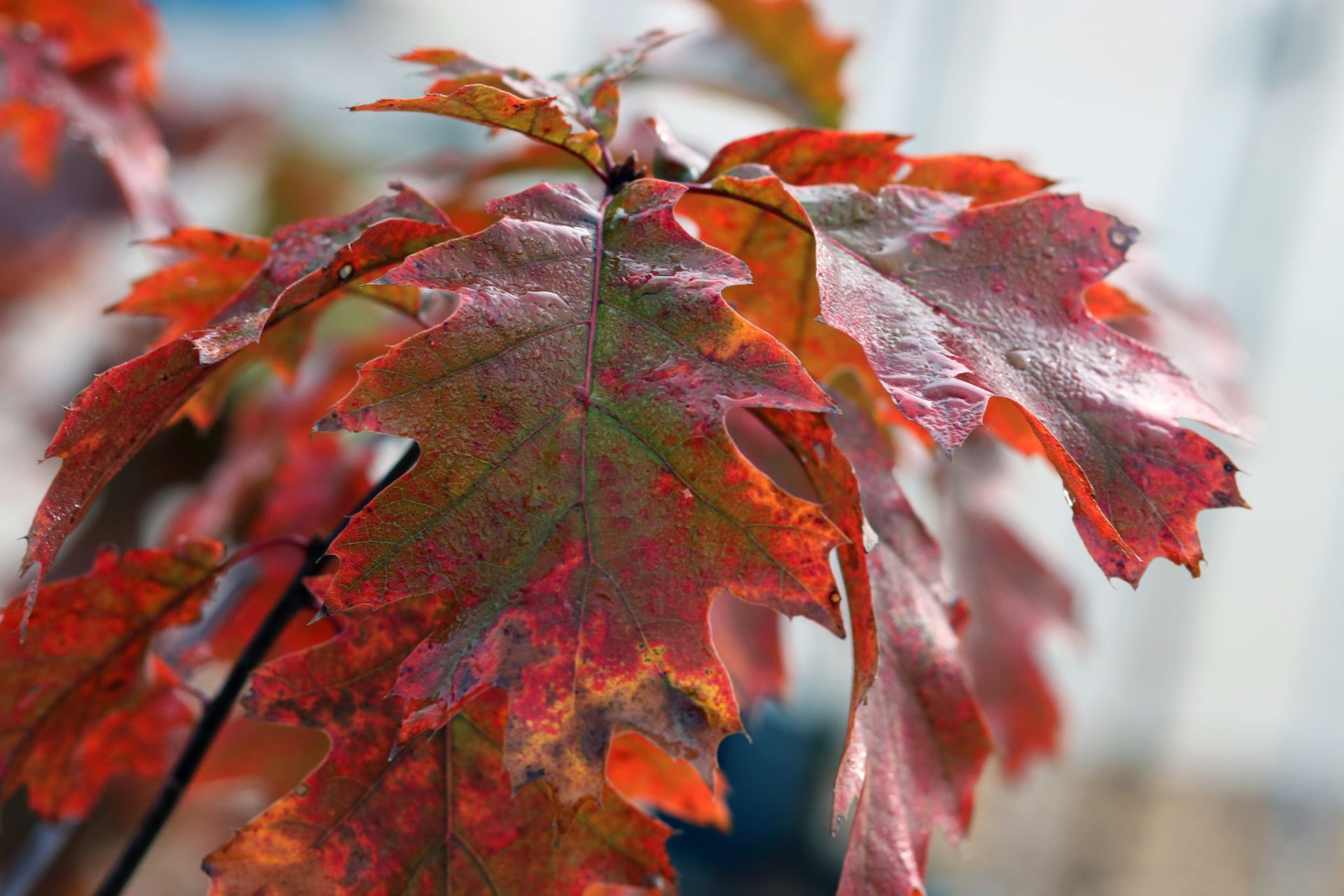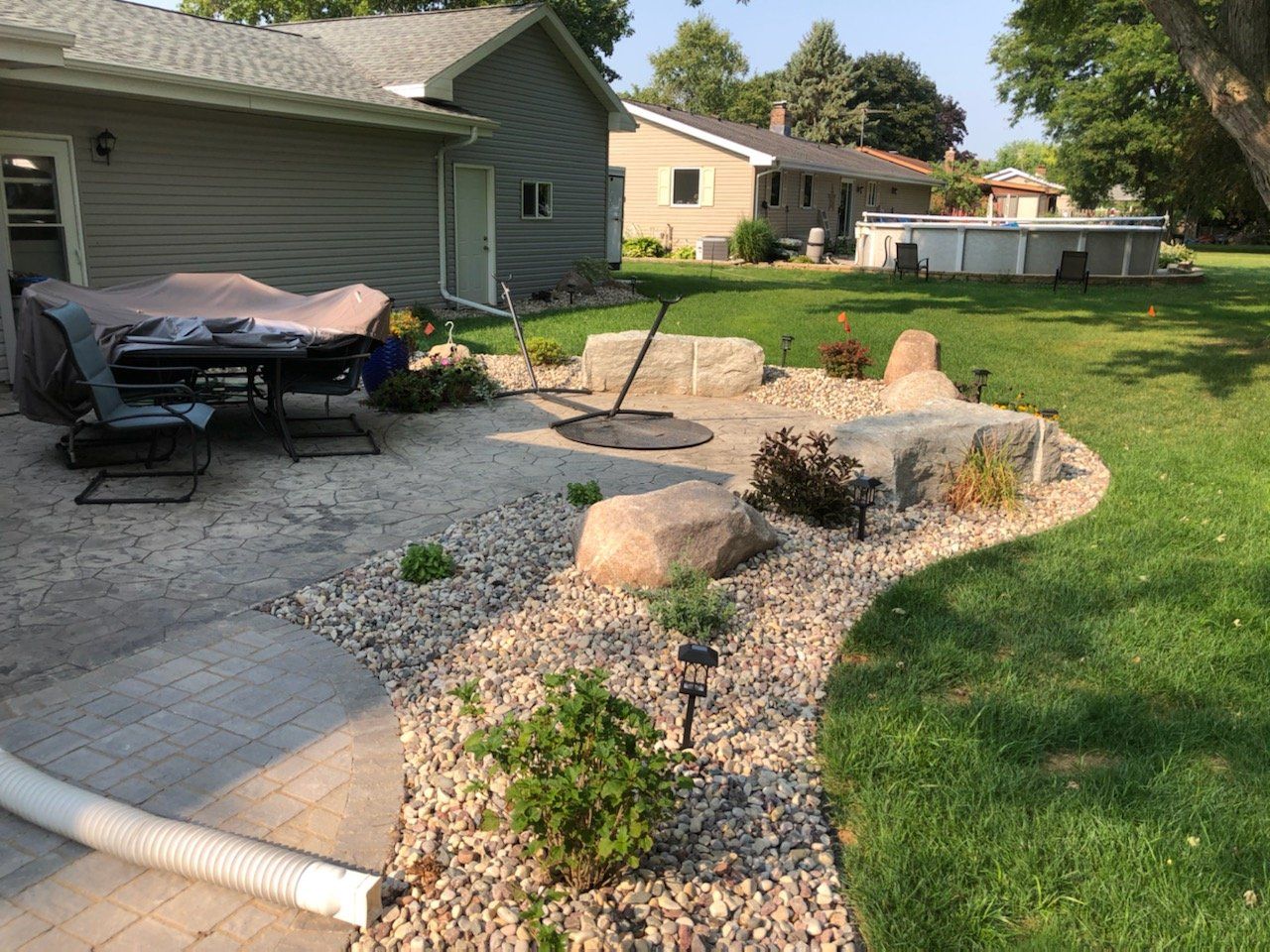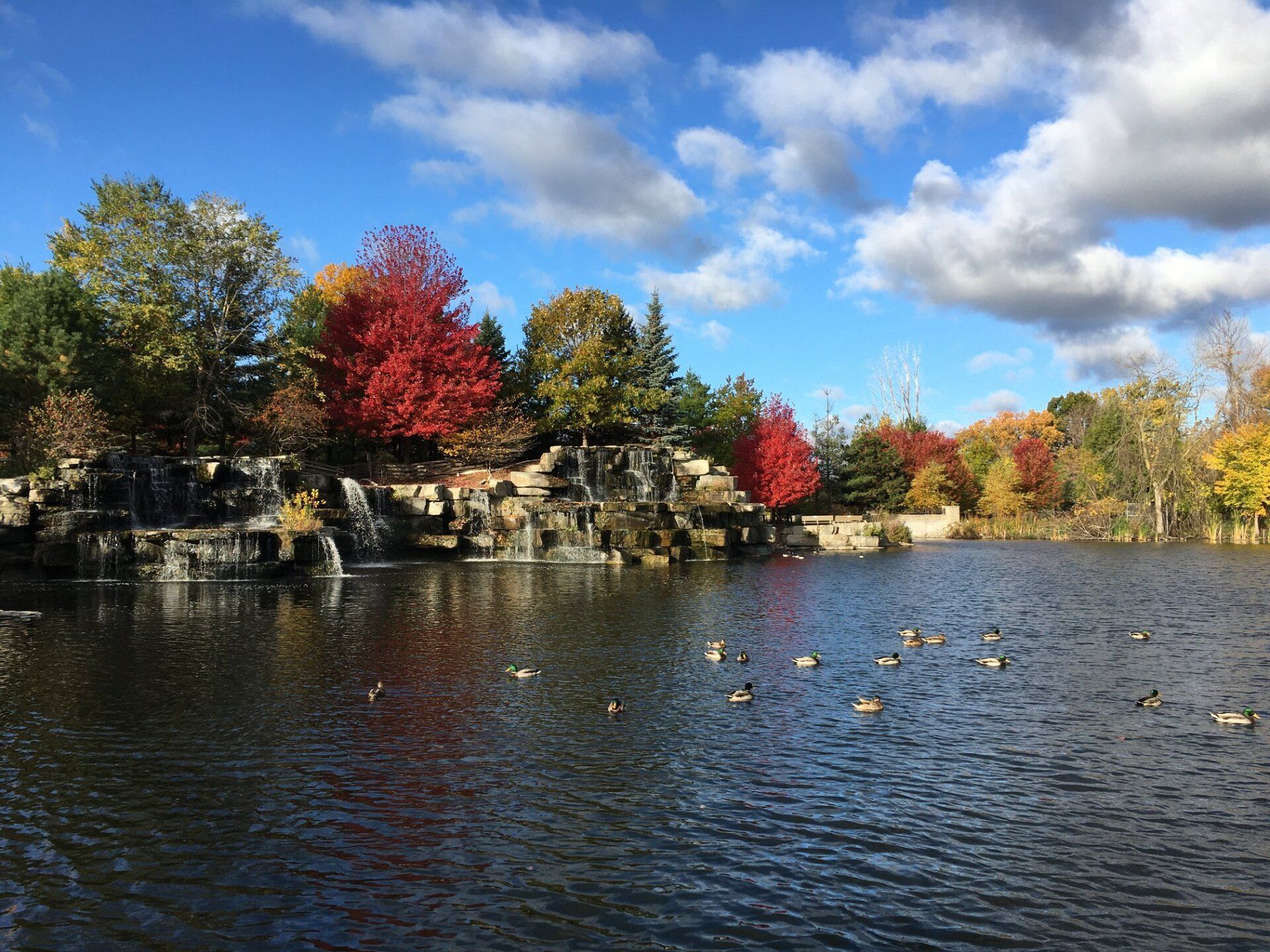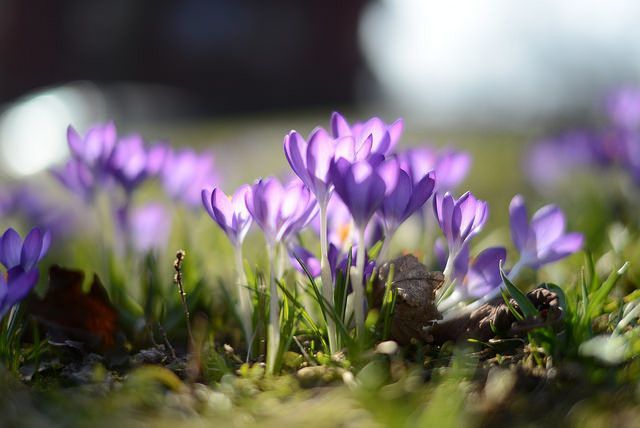
Enjoy cooler temperatures, bountiful harvests and late-season blooms in your September garden. Midwest gardeners can relish the cooler temperatures of September as they tackle a variety of projects. It's an ideal time to assess your plants' health, remove any faded blooms, and tidy up foliage to ensure a beautiful garden display until the last days of the season. September is also the perfect window for dividing and transplanting perennials. With a focus on planting cool-season vegetables and adding fall-flowering plants to your beds, this month offers many opportunities for both productivity and beauty in your garden. Water, Weed and Rake Even though weather is getting cooler, plants still need adequate moisture. If the fall is dry, water well. Otherwise, plants might go into winter dehydrated and stressed, making them more likely to die out by spring. Weed Often Late summer and early fall are when many of the worst weeds go to seed. Let them go now, and they'll scatter thousands of seeds all over your garden. Basic cleanup in late summer and fall will prevent far more cleanup and weeding come spring. Remove Struggling Plants If any annuals are struggling this late in the season, just pull them up and put them in the compost heap. If a perennial is looking shot, cut it off at ground level and discard the foliage. Start Raking Don't worry about leaves that collect around shrubs and perennial plantings—they'll actually protect your plants. But don't allow leaves to hang out for more than a few days on lawns. They suffocate the grass. Put in New Plants Consider Cool-Season Annuals Flowering kale and cabbage, pansies and lobelia will brighten bare spots and outdoor containers for several weeks to come. Foolproof Fall Container Garden Combinations Stock Up on Bulbs October is the ideal planting time for bulbs in the Midwest, but supplies can go fast. Buy bulbs when you see them and keep in a cool, dry place (65° F or under, if possible) until planting time. Brighten With Mums Buy them now in full bloom. Choose from either florist's mums, which aren't winter-hardy but are very tidy-looking with large flowers, or garden mums, which are more wild-looking but will come back again next year. Florist's mums are great for pots indoors and out, while garden mums are good for planting in the ground for a permanent display. Divide and Plant Perennials Especially in the Midwest, fall is a great time to divide and plant most perennials and roses. Plant trees and shrubs throughout the season—just be sure to keep well-watered if the fall is dry. And as always, if you're unsure of where to begin with these projects or just prefer to leave the heavy lifting to us, call us today to schedule your free landscaping consultation! Source: https://www.midwestliving.com/garden/midwest-calendar/september-garden-calendar/

Fall in Wisconsin is a bittersweet season. The initial dread of the upcoming winter months can lead to a reluctance to embrace the beauty in the fall landscape. This is a huge missed opportunity! September and October can (and should) be two of our most spectacular months outdoors. Another reason fall color can be neglected is that most nursery purchases in Wisconsin are made in May and June. This tends to lead to heavy favoritism toward the beautiful plants that are at their showiest between Mother’s Day & the 4th of July. Only the fall shopper (or the serious gardener) sees the spectacular late season plants. Don’t miss out! When you come visit us in May, ask us about fall color – while we only get to enjoy it for a few months, we can help you plan for it year-round. A Few Notes About “Fall Color” Color varies from climate to climate, and in Wisconsin it varies from year to year Ideal conditions for best fall color are COOL, but not frozen. Sunny, clear, and dry conditions can produce more vibrant reds, oranges, and rich purples. A wet summer and/or wet fall can lead to bland, dull, more fungal discoloration, and bronzes. Additionally, early frosts can cause bland colors because leaves are damaged before they have a chance to undergo fall pigment changes. Our Favorites for Fall in Southeast Wisconsin: Perennials Yellow Foliage: (after the flowers have finished) Amsonia, Balloon Flower, Daylilies, some Iris, some Solomon’s Seal Orange/Red Foliage: Angelina Sedum, Brookside & Rozanne Geranium (Cranesbill), Bergenia Purple/Deep Maroon Foliage: Hillside Black Beauty Snakeroot, some Coral Bell varieties Shrubs Viburnum , some Spirea varieties (especially the “Double Play” series), Diervilla (which is both native and underappreciated) Chokeberries – brilliant red berries and fiery scarlet foliage in fall, a very popular choice Blueberries – glossy oval leaves turn an outstanding orange in the fall (only plant IF your soil is acidic enough, or you supplement with acid-loving plant foods) Sumac – true red. This is the spectacular “fire engine red” plant seen alongside our interstates and county highways Burning Bush – a very showy shrub that turns a luminous florescent pink in the fall. It is one of the classics and is the first on many people’s lists. However, we are seeing some hardiness problems and dieback every time we have a hard winter. Also, some varieties are no longer suggested for planting because they’re invasive. Use with some discretion. Ornamental Trees Serviceberry – native, and offers an outstanding brick red/orange color in the fall Callery Pear – beautiful, striking deep purple color in the fall. There are some potential concerns about the invasiveness of these trees, so consider this selection with some discretion. Fringetree – narrow leaves turn a golden yellow in the fall. Ginkgo – bright, sunshine yellow AND unusual leaf shape. Shade Trees Honeylocust – select varieties turn gold in the fall. Poplars/Aspen – though not as stunning as they are in Colorado, here in WI they still turn a nice yellow when we have good clear weather. Scarlet Oak – shiny, bright scarlet leaves in the fall. Sugar Maple – some varieties are especially showy. Sugar Maples are the ones that can truly turn all three fall colors: yellow, orange and red on the same tree. Freemanii Maple s – including: Autumn Blaze, Autumn Fantasy, etc. Fall foliage is a striking orange-red. Fruits (that are pretty and visible in fall) Holly – fruits ripen in the winter, providing a nice contrast of red berries and glossy green leaves. Winterberry (our native “holly”) – although the leaves drop in the fall, the red fruit can persist long into winter. Brilliant Red Chokeberry – glossy green leaves turn scarlet red in the fall, and has brilliant red berries that are retained for an extended time Sumacs – in addition to their true red fall color, they also produce reddish fruits American Beautyberry – large clusters of purple berries that ripen in September through October and attract many wild bird species. Source: https://pialasnursery.com/beyond-burning-bush-fall-scaping-for-gorgeous-late-season-landscapes/

When you need inspiration for using plants in your garden for maximum impact, try a few of these easy landscaping ideas. They'll help you to use basic design concepts to create a gorgeous outdoor space you can enjoy when relaxing in your backyard, sitting on your front porch, or driving up to your house after a busy day. Create Swaths of Color One easy landscape idea that's simple to implement is to grow big swaths of the same plant for bold interest and contrast with another. Repeat Colors and Textures Planting one of everything gives your garden a hodgepodge look. Avoid that by reusing the same colors, shapes, or plant varieties all around your landscape. Make Plants Do Double Duty If your yard has limited space, it's important to make the most of it! One easy landscape idea that makes the best use of plants is to take advantage of those that serve more than one purpose. For example, plants that offer privacy from the neighbor on the other side while also providing an attractive backdrop. Contrast Bold Colors One of the most basic, easy landscaping ideas is to create contrasts. Also, consider color; when you pair rich burgundy-purple with chartreuse, the gold hues become brighter, and the purple tones become richer and darker. Together, the colors are much more effective than when used alone. Mix Materials You can easily add a level of interest to your yard by incorporating a variety of plants and hardscape materials. For example, the natural feel of lawn and cut flagstones makes an eye-catching contrast against smooth beach pebbles and gravel. The color of the flagstone mimics the beach pebbles and ties the two together; it's an easy landscaping idea and also a good example of using repetition. Play with Geometry Take advantage of lines, shapes, and angles when reviewing your gardening ideas and laying out your yard to add drama and impact. Frame Your Garden with Hedges and Fences Add interest to your yard with structures. For example, use low fences or hedges to divide spaces and give each space or room its unique identity. Plus, the structures add interest all year long. Make The Most of Trees and Shrubs Trees and shrubs are some of the most critical players in a well-designed landscape. It's easy to use them to make an impact, especially if you select varieties that have colorful foliage. Go a step further with some creative pruning. Place Garden Beds In Your Lawn It's easy to plant all your beds and borders along the perimeter of your property, but adding an island bed that floats in your lawn is an easy landscaping idea for a good-looking yard. Make island beds extra effective by adding height to the center. Plus, you need to walk around the planting to see what's behind it, so it adds a bit of mystery. Plant Shades of Green Using a variety of shades of green helps add depth to your plantings. Bright chartreuse greens (seen in these 'Frisia' honey locust trees) catch the eye and stand out in the landscape, especially compared to the darker, richer tones often found in evergreens. Blue-greens add a softness and almost always harmonize well with other shades. Source: https://www.bhg.com/gardening/landscaping-projects/landscape-basics/easy-landscaping-ideas/ And as always, if you'd rather leave the design and installation to us, feel free to reach us at 920.462.7041 for YOUR free landscaping consultation!

Wow, from winter to summer with planting, mowing, and trimming in between. There is no time to take a break with weather changes this quick, but we will take it. We will be shoveling snow before long. So, let us look at some tips for your garden for the month of July. Perennials Some tips we would like to share with you involve perennials and what you should try to do with them come July. How To Prune Your Perennials For The Summer Season Flowers, plants, trees have all had a good Spring to get stabilized and now we enter part of the season that can prove to be brutal if the temperatures and moisture do not cooperate. What you should do with your perennials is to remove the dead flowers! As flowers fade you should get out and remove them as soon as you can. While doing this, remove both flower and stem. Some plants produce a stalk that is separate from the rest of the foliage. That stalk should be removed as well. Cut the perennial back to unopened buds or cut back to a good set of leaves. You should also shear the plant anywhere from 25 to 50%. Also, look at the perennial and selectively remove any tired foliage. This helps your perennial to flourish without carrying so-called “dead weight” through the hot season. Shrubs Bushes or shrubs that flower in the summer bloom on growth that is coming from the present growing season. These bushes or shrubs should not be pruned in the summer before blooming has begun because this would remove the buds that are just about ready to bloom. You should always prune these types of bushes or shrubs in the spring before any new growth begins or during the winter season. But for the month of July, the heart of the summer season, let them be, no pruning required at this time. Trees Here are some tips on how to maintain your trees in the heat of summer. Help keep trees cool. How? Well, pay attention to what landscape materials you use under a tree. For example, hard materials such as rock or decomposed granite can cause heat to reflect or radiate which in turn puts undue stress on a healthy tree. How about paying attention to what your tree is telling you. If leaves fall off during July your tree may be telling you that it is reacting to soil compaction, saturated soil, you’ve planted a shade loving tree in the sun (or vise verses) or you are simply experiencing drought conditions and it needs water. And if you must prune in July, keep it to a minimum. Dead branches or branches that may be able to cause damage to your home or other structure should be trimmed out, including broken ones. However, try not to do any major pruning of trees until late fall or winter. Lawns For lawn care in July, continue to mow the lawn as needed. Make sure the lawn gets about an inch of water per week. Mulch clippings to aid in cooling and feeding your lawn. Edge planting beds for a clean look. If you are inclined, maybe plant some warm-season grasses and make sure you keep them watered. Stop fertilizing your lawn in mid-summer as this could burn the grass out. And make sure your lawnmower or tractor blades are kept sharp to make a clean cut and a great looking lawn. With these simple tips your lawn will look great into the fall season. And as always, if you have any questions or would like to schedule YOUR free landscape consultation, call us today at 920.462.7041! Source: https://heritagehillnurseryinc.com/2020/07/wisconsin-gardners-seasonal-monthly-tips-for-july-2020/

f you don't have a green thumb, consider simple and easy-to-implement landscape design ideas, such as grass, gravel pathways, water features, statues, pergolas, outdoor kitchen areas, outdoor fireplaces, cozy fire pits, privacy berms, patios and much, much more!!! Call us today to schedule YOUR free consultation and help transform your yard into the yard of your DREAMS!!! 920.462.7041





